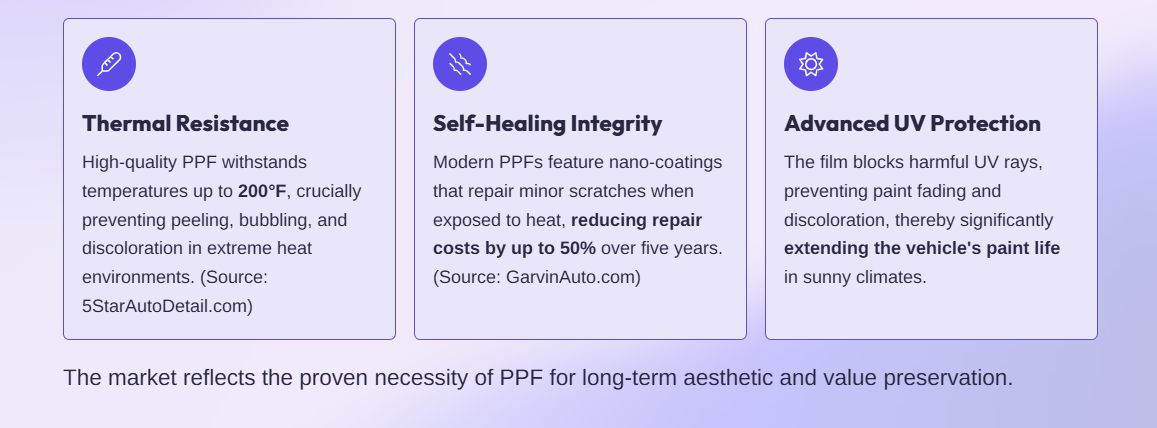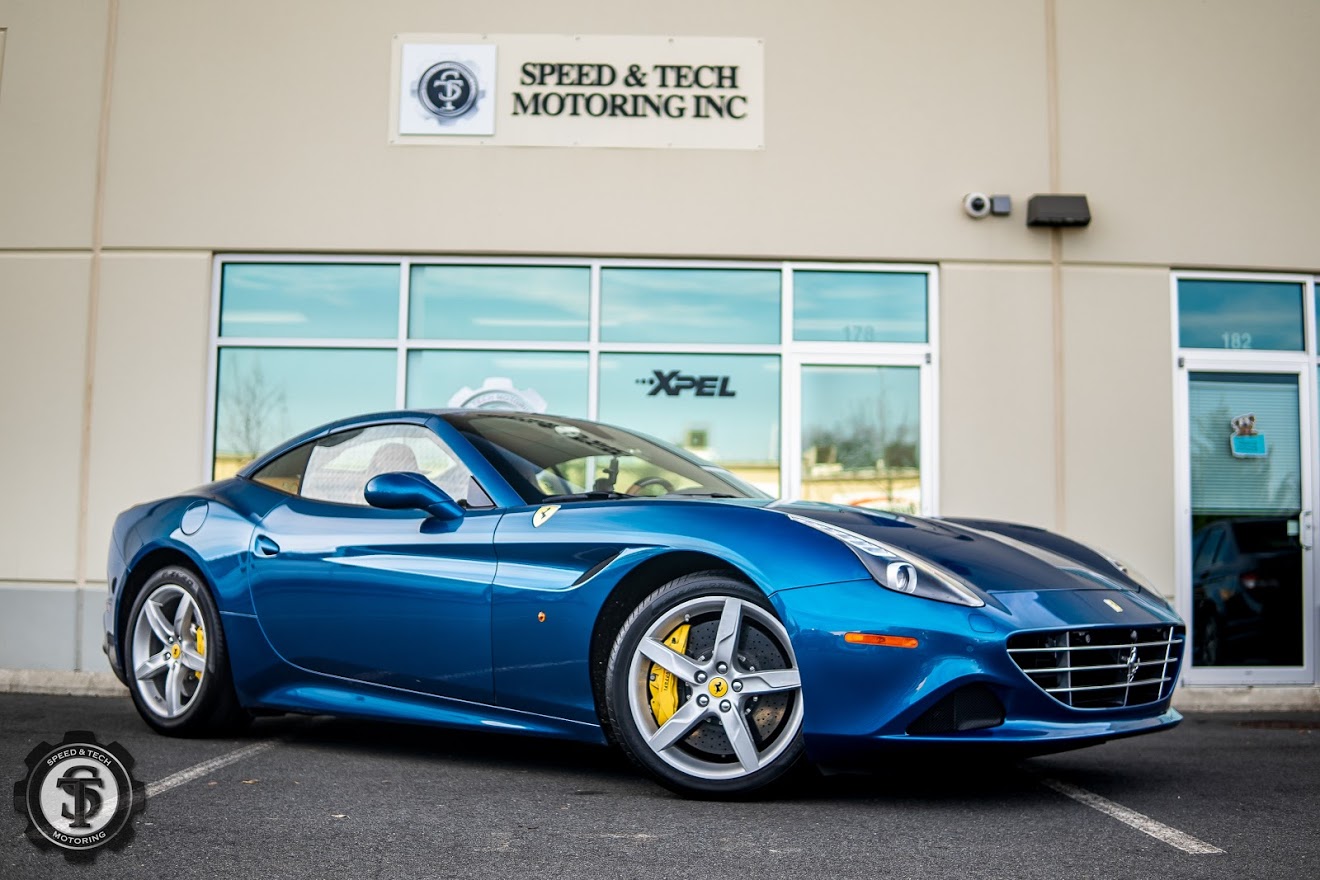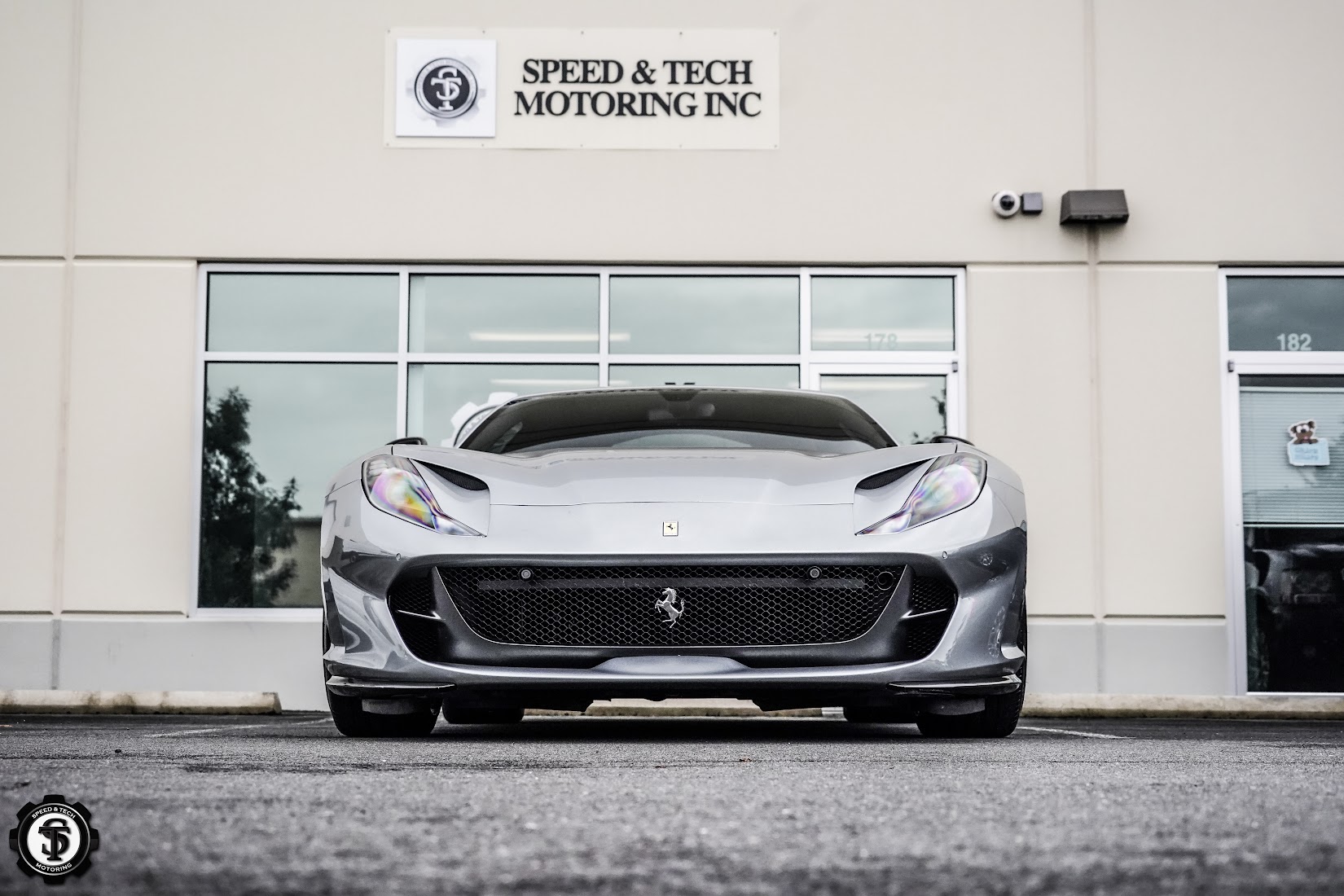Extreme climates can be brutal on a car’s exterior. Whether it’s intense UV radiation, road salt, or blowing sand, paint can fade, peel, or chip over time. That’s where paint protection film—commonly known as PPF—proves its worth. At Speed & Tech Motoring, understanding how this film interacts with environmental stress helps car owners make smarter, long-lasting protection choices.
Think of paint protection film as a shield that works quietly in the background. It doesn’t just add shine—it creates a durable, self-healing layer that resists fading, corrosion, and surface damage even in the toughest weather.
Understanding the Role of Paint Protection Film
What Paint Protection Film Actually Does
Paint Protection Film Sterling VA is a transparent, thermoplastic urethane film applied to a car’s painted surfaces. Its primary job is to absorb impact, deflect contaminants, and prevent chemical degradation. It keeps the original color vibrant, no matter the season or location.
Why Harsh Climates Accelerate Paint Damage
Harsh climates—whether desert heat, coastal humidity, or freezing winters—create a perfect storm for paint degradation. UV rays break molecular bonds, salt promotes oxidation, and debris causes micro-abrasions that dull the finish over time.
How Paint Protection Film Works

Multi-Layer Structure and Material Composition
Modern paint protection film is made up of multiple layers: a clear coat, an elastic TPU (thermoplastic polyurethane) layer, and a pressure-sensitive adhesive. Together, these layers flex, absorb, and recover from impact.
How the Film Adapts to Temperature Extremes
PPF materials are engineered to expand and contract with temperature fluctuations, preventing cracking or peeling even under extreme heat or cold.
The Role of TPU in Durability
TPU gives the film its elasticity, enabling it to return to its original form after minor scratches—a property known as self-healing.
The Importance of UV-Blocking Agents
Integrated UV inhibitors reflect harmful rays, protecting not just the film but the paint beneath it from oxidation and fading.
How Paint Protection Film Fights Environmental Stress
Protection from UV Radiation and Fading
Sunlight is one of the biggest threats to automotive paint. PPF acts like sunscreen, blocking up to 99% of UV rays, which helps maintain color integrity for years.
Guarding Against Salt, Sand, and Acidic Rain
In coastal areas, salt and acidic rain corrode paint surfaces. Paint protection film creates a non-reactive barrier that prevents these contaminants from bonding with paint molecules.
Deflecting Debris and Small Impacts
Everyday hazards like gravel and insects can chip or etch your paint. The film absorbs these hits, keeping your finish smooth and flawless.
Paint Protection Film in Hot and Humid Regions
Preventing Oxidation and Surface Peeling
In tropical climates, paint can oxidize faster due to moisture and UV exposure. PPF locks out oxygen and moisture, reducing the risk of peeling or bubbling paint.
Self-Healing Properties Under Sunlight
When exposed to heat, the upper layer of the film softens, allowing small scratches to vanish. This makes it ideal for areas with strong sun exposure and high humidity.
Paint Protection Film in Cold and Salty Environments
Preventing Salt Corrosion and Micro Cracking
Road salt and icy grit can eat away at paint and clear coats. PPF prevents salt from adhering directly to painted surfaces, minimizing corrosion risk.
Maintaining Flexibility in Freezing Temperatures
Even in sub-zero weather, modern films remain flexible, avoiding cracks or edge lift. This adaptability ensures year-round protection in cold climates.
The Chemistry of Longevity: How PPF Bonds with Paint
Molecular-Level Adhesion and Transparency
High-quality adhesives create a tight molecular bond with the paint, allowing the film to remain crystal clear without yellowing or bubbling.
Breathability and Resistance to Moisture Trapping
Unlike older vinyl wraps, PPF allows microscopic air passage, preventing trapped moisture or haze formation beneath the film.
Common Misconceptions About Paint Protection Film in Harsh Climates
Myth: PPF Peels in Heat or Cold
When properly installed and cured, PPF doesn’t peel due to temperature changes. Advanced adhesives used today are designed for climate resilience.
Myth: PPF Yellowing Is Inevitable
Yellowing was a concern in early-generation films. However, today’s UV-resistant coatings maintain optical clarity even after years of exposure.
Maintenance Practices for Extreme Conditions
Cleaning Without Damaging the Film
Mild soaps and pH-neutral cleaners should be used. Abrasive pads or strong detergents can weaken the topcoat. Hand washing is ideal to maintain clarity.
When to Reapply or Inspect the Edges
Regular inspection ensures that film edges remain sealed, especially on bumpers or hood corners that experience more heat or abrasion.
Why Harsh Climate Vehicle Owners Prefer Professional Installation
The Importance of Precision and Surface Prep
Proper cleaning, decontamination, and surface alignment are critical before applying PPF. Even minor debris can affect adhesion quality.
Quality Control and Long-Term Results
Certified installers ensure even coverage, proper curing, and bubble-free application—maximizing the film’s lifespan in tough conditions.
The Long-Term Value of Paint Protection Film
Cost Avoidance and Paint Preservation
By reducing the frequency of repaints and touch-ups, paint protection film saves time and resources while extending the life of your factory paint.
Sustainability Benefits of Longer Paint Life
Fewer repaints mean less solvent use and waste. PPF indirectly contributes to environmental sustainability by preserving original materials.
Speed & Tech Motoring Serving the Ashburn Farm and Beyond in Ashburn, VA
Speed & Tech Motoring is dedicated to serving the diverse needs of the local community of Ashburn, VA. Including individuals residing in neighborhood like Ashburn Farm With its convenient location near landmarks such as the Ashburn Park, Trailside Park and major intersections like Claiborne Pkwy & Gloucester Pkwy and Claiborne Pkwy & Village Dr (coordinates: 39.053610, -77.500374), we offer Paint Protection Film services.
Get Paint Protection Film Services at Ashburn Farm Now
Navigate from Ashburn Farm to Speed & Tech Motoring Now
How Paint Protection Film Preserves Vehicle Paint in Harsh Climates: Key Statistics & Market Insights?
- Thermal Resistance: High-quality PPF withstands temperatures up to 200°F, crucial for preventing peeling, bubbling, and discoloration in extreme heat environments (5StarAutoDetail.com).
- Self-Healing Technology: Modern PPFs feature nano-coatings that repair minor scratches when exposed to heat, maintaining paint integrity and reducing repair costs by up to 50% over 5 years (GarvinAuto.com).
- UV Protection: Advanced films block harmful UV rays, preventing paint fading and discoloration, extending vehicle paint life significantly in sunny, harsh climates.
- Market Growth Reflects Effectiveness:
- Global PPF market valued at $502.55M in 2024, projected to reach $726.63M by 2030 (GrandViewResearch.com).
- CAGR of 6.6% to 7.6% driven by rising demand for vehicle aesthetics and protection in extreme environments.
- North America leads adoption, with luxury and sports car owners prioritizing PPF for paint preservation.
- Resale Value Impact: Vehicles with PPF retain up to 15% higher resale value due to better-maintained paintwork, making PPF a smart investment in harsh climates (GarvinAuto.com).
- Durability Span: Typical PPF lifespan ranges from 5 to 10 years depending on material quality and installation, providing long-term protection against environmental damage (GarvinAuto.com).
Visual Suggestions:
- Chart showing temperature tolerance vs. PPF degradation risk
- Bar graph of market size growth 2024–2030
- Infographic of self-healing process and UV protection benefits
- Resale value comparison: with vs. without PPF]



Sources: 5StarAutoDetail.com, GarvinAuto.com, GrandViewResearch.com, DataBridgeMarketResearch.com
Paint protection film isn’t just a luxury—it’s a science-backed solution for protecting vehicles against nature’s harshest elements. Whether you live in hot, humid, or freezing conditions, this technology works year-round to preserve your paint’s beauty and integrity.
At Speed & Tech Motoring, the focus is always on performance, longevity, and education—helping drivers understand how PPF keeps their vehicles looking and performing their best, no matter the climate.
FAQs
Does paint protection film work equally well in both hot and cold climates?
Yes, modern films are engineered to handle temperature swings without cracking, peeling, or discoloring.
How long does paint protection film last in extreme weather?
Typically, 7–10 years with proper care. In harsher conditions, durability depends on maintenance and film quality.
Can paint protection film prevent rust formation?
While PPF can’t stop rust that’s already present, it helps prevent new corrosion by sealing out moisture and salt.
Does UV exposure damage the film over time?
No. Most films include UV inhibitors that prevent fading and degradation from sunlight.
How often should paint protection film be cleaned in dusty or salty regions?
Every two weeks is ideal. Gentle washing removes contaminants before they can harden or stain the film.
OUR OTHER BLOG POSTS RELATED PAINT PROTECTION FILM
How Paint Protection Film (PPF) Protects Vehicles from Road Debris and Gravel in Sterling, VA
Paint Protection Film Care: Complete PPF Maintenance Guide
Paint Protection Film: Ultimate Guide to Benefits, Types, and Protection for Your Car






